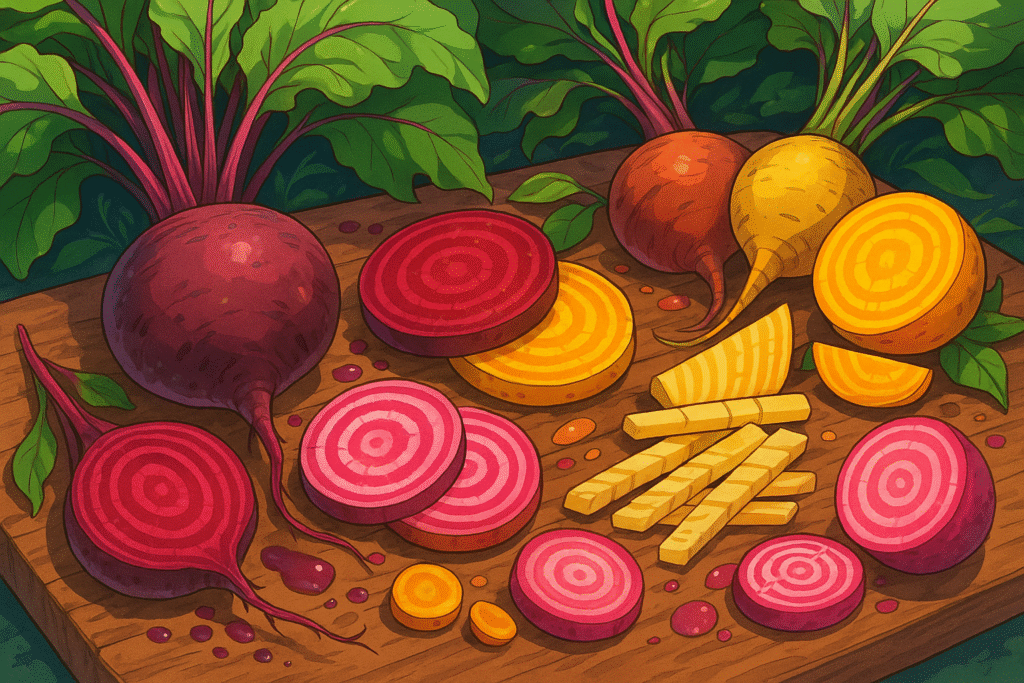Beetroot (Beta vulgaris)

About Beetroot
Beetroot is earthy, sweet, and vibrantly pigmented — a root that brings both color and complexity to the kitchen. It’s used in everything from roasted salads to cold soups, juices, and desserts.
Its earthy tone pairs well with bright acids and rich dairy, and it offers not just flavor but a visual punch few vegetables can match.
The History of Beetroot
Beets were first cultivated around the Mediterranean for their leafy tops, not their roots. The ancient Romans and Greeks used them medicinally and ritually — they even associated them with love and offered them to Aphrodite.
The swollen, edible root we know today was developed in the 16th century in Europe, particularly Germany and Poland. By the 19th century, beetroot also became a key source of sugar in Europe, particularly during wartime when cane sugar was scarce.
It features prominently in Eastern European cuisines — most notably in borscht, the iconic beet soup of Ukraine, Russia, and Poland.
The Science of Beetroot
Beets get their vivid red-purple color from betalains, specifically betanin, which is heat-sensitive and water-soluble. They’re also high in nitrates, which have been studied for cardiovascular benefits and athletic endurance.
That deep earthiness? It comes from geosmin, the same compound that gives soil its smell — making beet flavor truly elemental.
The Geography of Beetroot
eets thrive in cool climates and are grown across Europe, the U.S., and northern Asia. They’re a classic root crop for autumn and winter storage, especially in Slavic, Nordic, and British cuisines.
Golden and striped varieties have gained popularity in gourmet kitchens, while Eastern Europe continues to celebrate traditional deep-red beets.
Varieties of Beetroot
The classic red beet. Smooth skin, deep color, and sweet flavor — perfect for roasting or pickling.
Chioggia
An Italian heirloom with candy-cane stripes. Milder and less earthy, great raw or lightly steamed.
Golden
Bright yellow-orange flesh with a mellow flavor and less staining — popular in modern cuisine.
Cylindra (Formanova)
Long and tapered like a carrot. Easy to slice into uniform rounds — ideal for cooking or canning.
Bull’s Blood
Grown for its deep red leaves as much as its root. Both are edible and slightly peppery.
FAQs All your questions about Beetroot: answered
Can you eat beetroot raw?
Yes! Raw beets can be shredded into slaws or thinly sliced into carpaccio-style salads.
Why do beets stain everything?
Their betalain pigments are powerful natural dyes — great for coloring food, tricky for kitchen towels.
What’s the healthiest way to cook beets?
Roasting retains flavor and nutrients. Boiling can cause some nutrient loss into the water.
Why does beetroot make my urine red?
It’s called beeturia — a harmless condition that affects about 10–15% of people due to how they metabolize betanin.